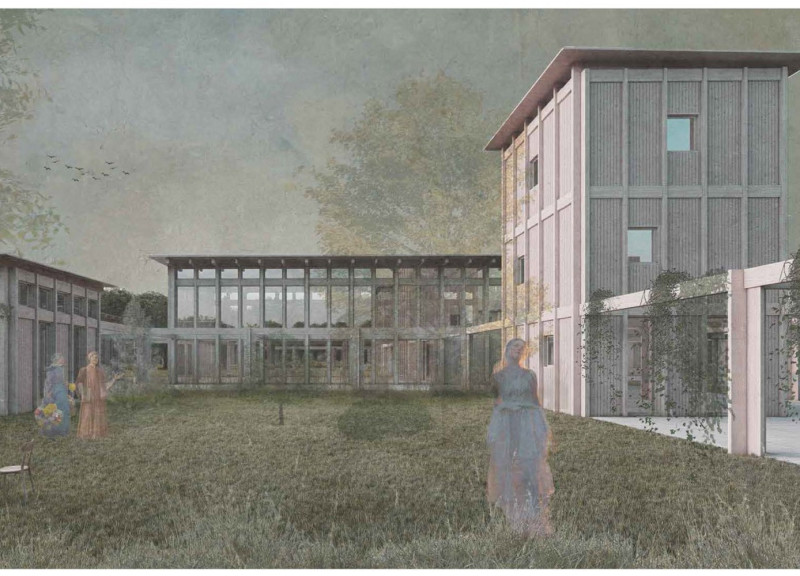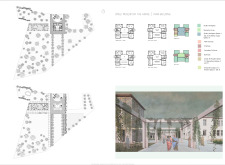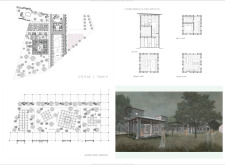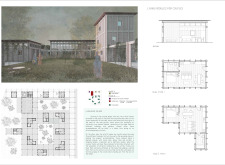5 key facts about this project
The design features a modular living solution framed by a rectangular wooden grid. This grid defines the layout and accommodates residences intended for both artists and couples. The emphasis is on creating flexible spaces that meet diverse needs while fostering a sense of community among residents. It seeks to balance individual living arrangements with shared experiences.
Modular Configuration
The residences constructed for artists incorporate vertically oriented modules, allowing efficient use of space. Each unit consists of a daytime area, which includes a living room, dining room, and kitchen, along with a sleeping area containing a bedroom and bathroom. A small studio module on the upper level is tailored for artistic endeavors, providing an environment that encourages creativity.
Couples' accommodations adopt a horizontal arrangement of modules. This layout facilitates personal privacy while promoting a connection to shared living spaces. The configuration supports interaction among residents, creating a harmonious living environment that encourages both solitude and companionship.
Open Concept Design
In the main building, the removal of internal walls exemplifies a thoughtful approach to space management. This design decision creates larger areas that can serve multiple functions, such as studios or exhibition spaces. The open nature of the layout contributes to an inviting atmosphere, allowing residents to collaborate and interact more freely.
Material Choices
A wooden grid is the primary material used in the design; it serves as both a structural element and a key component of the aesthetic. This choice aligns with sustainability goals and provides a warm, approachable environment. The wooden surfaces help to enhance the sense of comfort within each living space, encouraging an atmosphere that feels both natural and inviting.
As shown throughout the design, attention to modularity and flexibility complements the goal of creating functional living environments. The interplay of light through the wooden grid creates interesting shadow patterns, which enrich the experience of the residences, drawing attention to the simplicity and beauty of the architecture.






















































